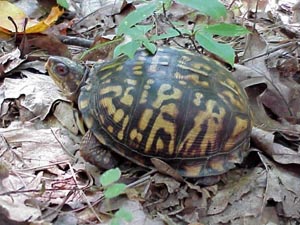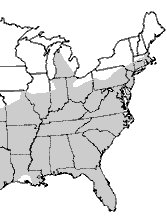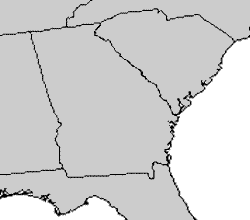Eastern Box Turtle (Terrapene carolina)



Photos by J.D. Willson unless otherwise noted
| Description: Box Turtles are mid-sized, terrestrial turtles – 4.5-6 in (11.5-15.2 cm) – with a high, rounded shell that is dark with many yellow or orange splotches. The carapace pattern is variable and becomes less prominent with age. There are four toes on each hind foot. Males have a concave plastron and often have red eyes. The plastron (bottom of the shell) is hinged, allowing the box turtle to completely close it shell.
Range and Habitat: Box turtles are found throughout the eastern United States. They are found in a variety of habitats but are most common in open hardwood forest in the Piedmont. They are often found along field or wetland edges. Highly terrestrial but will occasionally be found soaking in puddles or streams. Habits: With the exception of the Gopher Tortoise (Gopherus polyphemus), this is the most terrestrial turtle in our region. They are most commonly encountered after summer rain storms and in the fall when males actively search out females. Box turtles are omnivorous and eat mushrooms, berries, grapes, persimmons, and other fruits. Although adults are mainly herbivorous, few will turn down a juicy worm, slug, or insect. Box turtles have a low metabolic rate, which allows them to survive during times when food is scarce. These animals are long-lived (certainly reaching 50 years old or more) and take over 5 years to reach maturity. After a single mating, females can retain eggs and lay them years later. Young box turtles are extremely secretive and are seldom seen. Conservation Status: Box turtles are considered common and are protected in our region. Pertinent Reference: Account Author: Emily Rogers, University of Georgia – edited by J.D. Willson |
